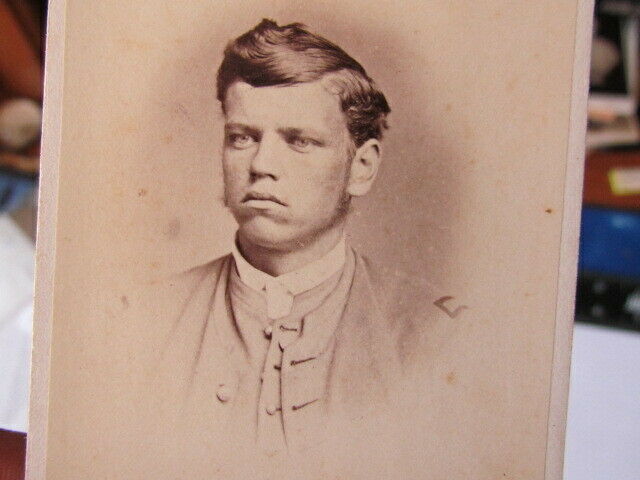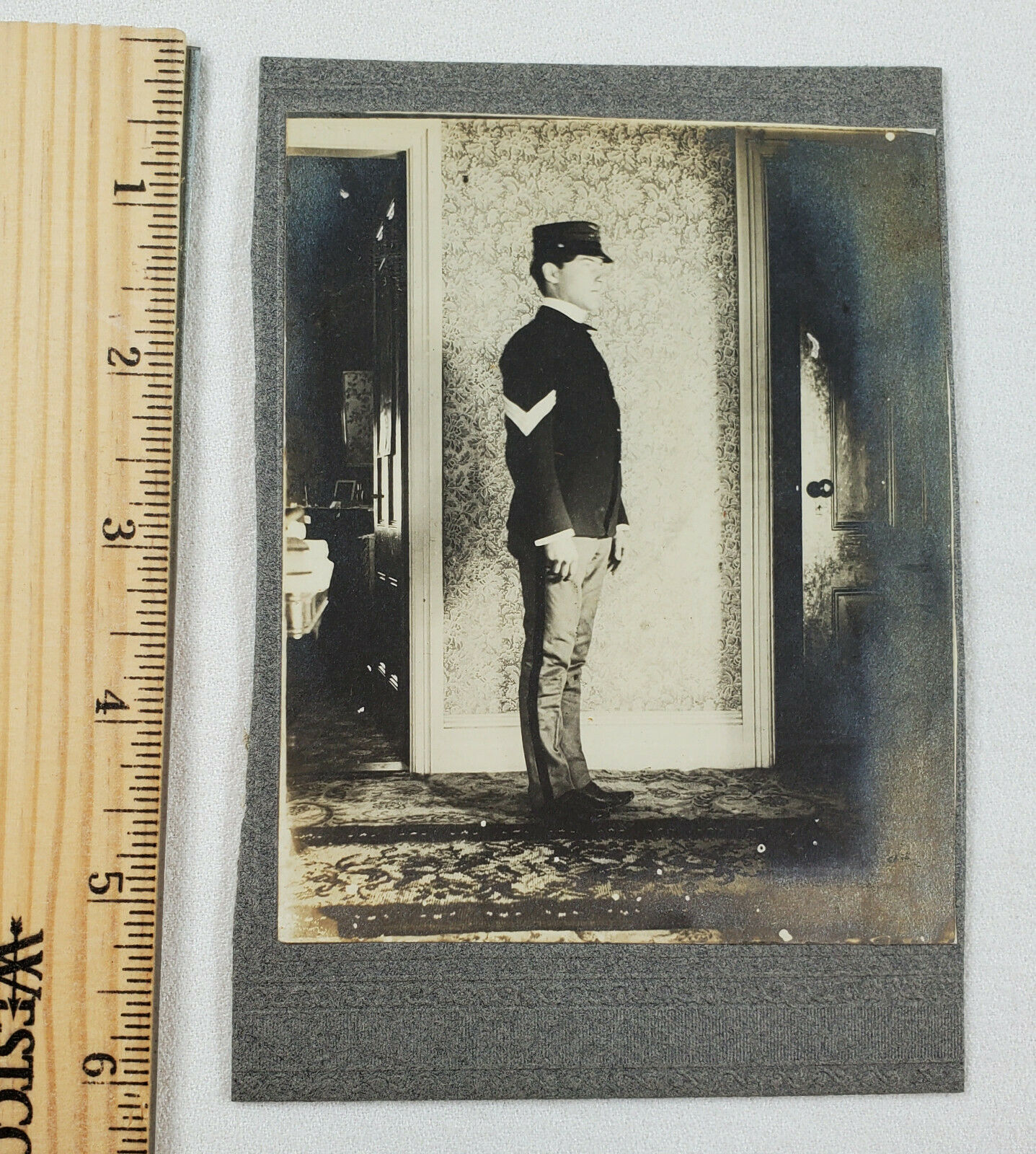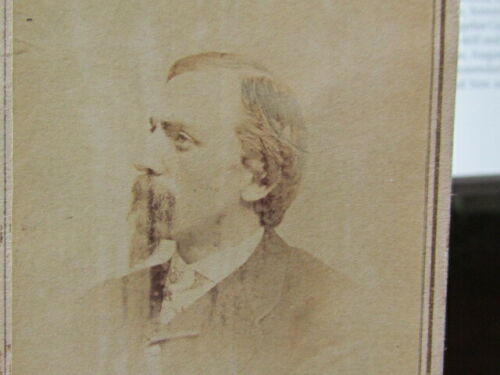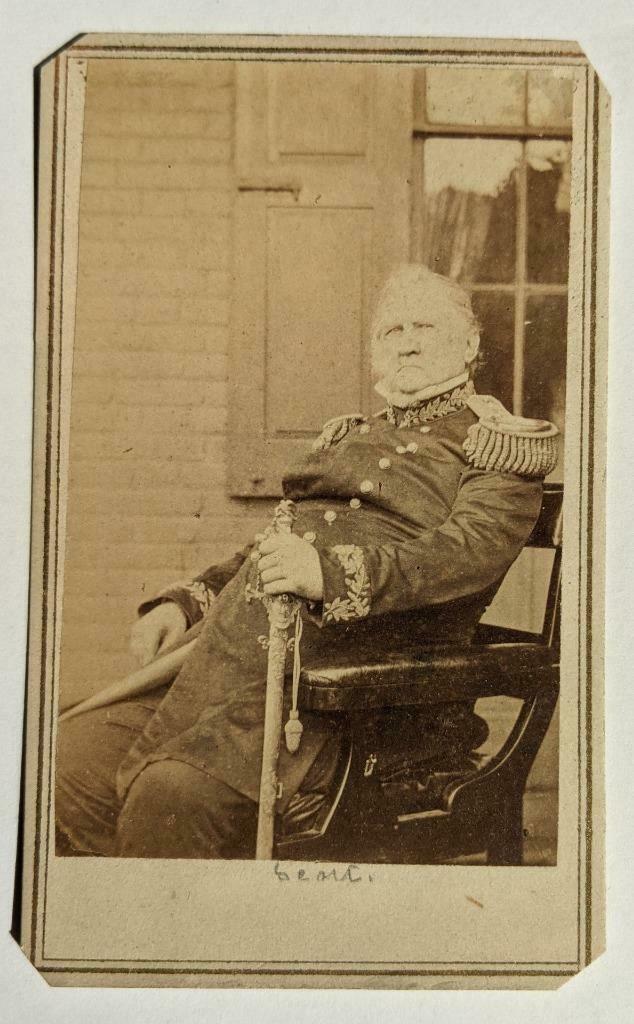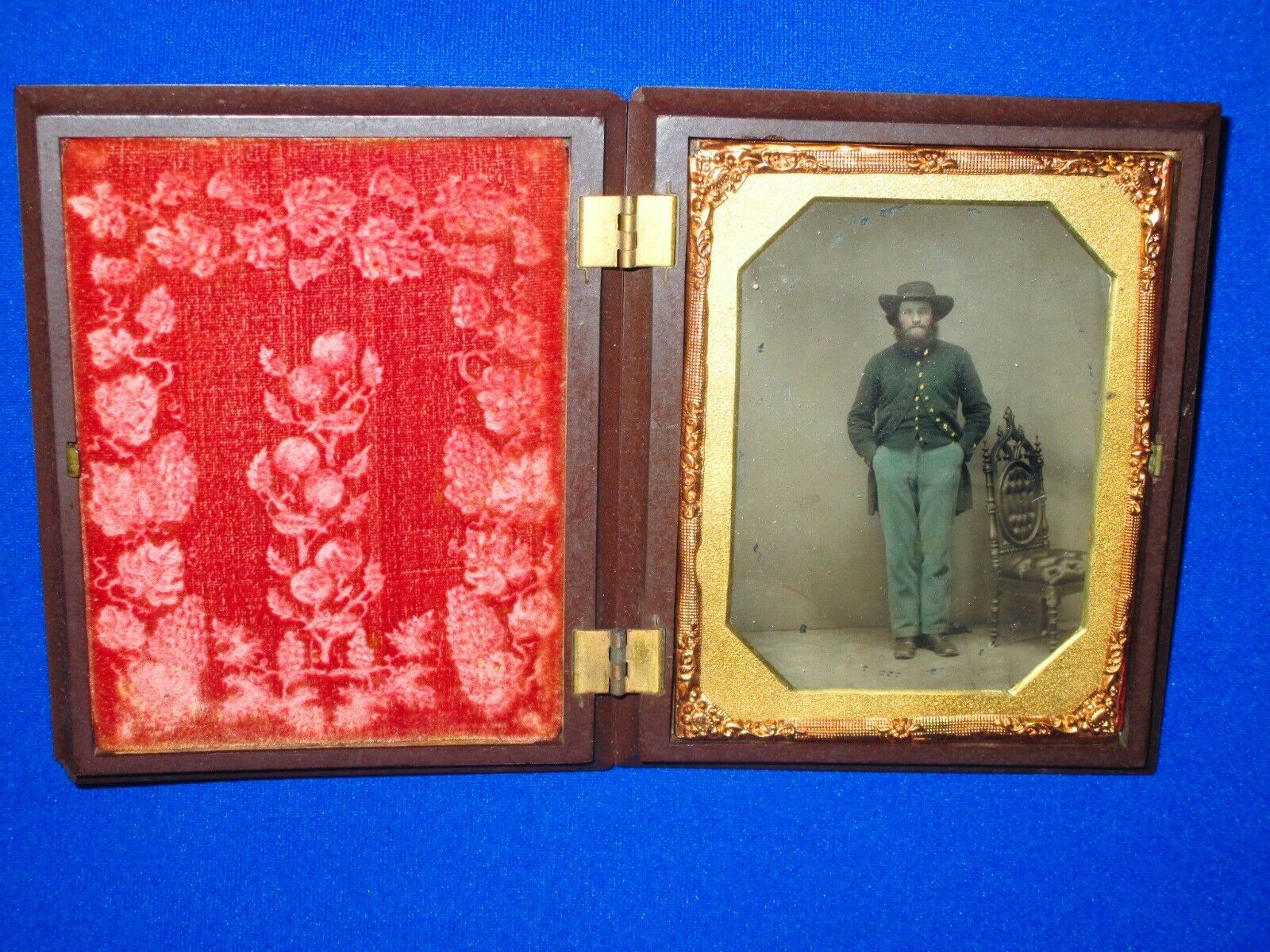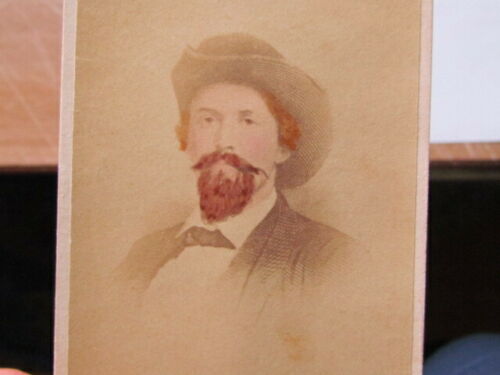-40%
Civil War CDV Photo Union General Irvin McDowell Original
$ 52.8
- Description
- Size Guide
Description
Original CDV of Civil War Union General Irvin McDowell photographed by R.W. Addis, Washington, D.C. Studio stamp on back. This CDV was part of vintage album including many CDVs of Union Army Generals (some signed), Abraham Lincoln, members of Lincoln's cabinet, Robert E. Lee (signed), politicians and a few notable writers and abolitionists during CW. The album was not salvageable but thankfully the photos were. Measures approx. 2 3/8 x 3 7/8". Condition is good there are couple slight indentations near top. This will ship fast and FREE within protective sleeve. Please contact us any questions we try our best and follow our store we focus on rare and unique.About McDowell:
'Irvin McDowell was a nineteenth century American military leader. Irvin McDowell was born on October 15, 1818, in Franklinton, Ohio. He attended common schools in nearby Columbus. At the suggestion of a French tutor, McDowell attended a private school in France in 1833. He returned to the United States in 1834 and received an appointment to the United States Military Academy at West Point. He graduated in 1838 and ranked twenty-third in his class. McDowell remained in the military for the next forty-four years. His first assignment was as a second lieutenant of artillery along the United States-Canadian border in Maine. In 1841, McDowell returned to West Point as an assistant instructor of military tactics. He joined General John Wool's staff during the Mexican-American War. By the conflict's end, McDowell had become the Assistant Adjutant General for the Army of Occupation. Between 1848 and 1861, McDowell served as a staff officer to higher-ranking military leaders. He developed a close friendship with General Winfield Scott while serving on his staff. He also served under future Confederate general Joseph Johnston. With the outbreak of the American Civil War, McDowell quickly moved to a position of leadership in the Union army. He entered the war as a major but was promoted to brigadier-general within a few months. He served as a military adviser to Salmon P. Chase, the Governor of Ohio. He assisted Chase in planning Ohio's early defense and the handling of recruits. Chase's successor, William Dennison considered offering McDowell overall command of all Ohio recruits, but at the urging of politicians from Cincinnati, the governor selected George McClellan for that position. McDowell soon had a role to play in the war effort. General Winfield Scott, the highest-ranking officer in the Union Army, intended to use McDowell's skills in an invasion of the Confederacy. Scott was too old to hold a field command, but he was responsible for planning of the first several months of the war. Scott proposed to assemble an army to defend Washington, DC, the nation's capital. He also planned to use the United States Navy to blockade the Confederate coastline. In early 1862, Scott intended to send an army down the Mississippi River. The general hoped that the army could gain control of the river and succeed in dividing the Confederacy in two. Scott wanted McDowell to have command of this army. Scott's plans for McDowell fell through. Rather than being in placed in charge of the army in the West, McDowell took command of the army in Washington, DC. Union politicians and civilians expected a quick resolution to the war and demanded that the Union military immediately take the offensive. They were unwilling to wait until 1862 for the Union army to advance. As soon as Virginia seceded from the Union in June 1861, McDowell advanced with his army into northeastern Virginia. His advance quickly stalled because of Winfield Scott's refusal to provide McDowell with adequate men and supplies. Scott still hoped to follow his own plan for the Confederacy's defeat and hoped to hinder the government officials currently directing the war effort. On July 16, 1861, McDowell finally had the supplies and men that he needed to advance against the Confederates. The Confederates had an army near Bull Run, a small creek in northeastern Virginia. McDowell had a larger army of thirty-five thousand men, divided into four divisions. He planned to have two divisions attack the Confederate flank, a third division attack the center of the Confederate position, and for the fourth division remain in reserve after making a brief feint against the Confederates' other flank. The Union soldiers were to march into position during the evening of July 20. Colonel Ambrose Burnside encouraged McDowell to let the men rest. He contended that the men could easily march the ten miles to the battlefield early the next morning and still arrive rested. McDowell agreed. On the march to the battlefield on July 21, many of the Union soldiers became lost in the early morning darkness. Other soldiers were exhausted after the early morning march. These were volunteers with limited training and were not seasoned veterans. Unexpected Confederate reinforcements were also arriving on the battlefield from Harper's Ferry. While the Union soldiers enjoyed some initial success, the Confederates eventually drove the Union army from the battlefield. Union officers often were unable to rally their men until they had reached the safety of Washington, DC. President Abraham Lincoln removed McDowell from command of the Army of the Potomac and replaced him with General George McClellan. Despite the defeat at the First Battle of Bull Run, McDowell remained with the Army of the Potomac as a corps commander. Lincoln repeatedly sought counsel from McDowell and infuriated McClellan. In the spring of 1862, McClellan launched the Peninsula Campaign. He transported by ship a significant portion of the Army of the Potomac to the James River peninsula. McClellan now faced a short march to capture the Confederate capital of Richmond. To protect Washington, DC, President Lincoln insisted that McClellan leave behind a sufficient force to guard the nation's capital. McDowell was placed in command of these troops. As McClellan marched towards Richmond, he requested that Lincoln send McDowell's men overland from Washington to Richmond. Lincoln initially agreed, but then ordered McDowell to march with his command towards the Shenandoah Valley to defeat a Confederate army under Thomas "Stonewall" Jackson. Jackson defeated McDowell’s force. McDowell repeatedly asked government officials to let him send his men against Richmond. Before he could advance on Richmond, his command was assigned to the Army of Virginia, under the command of John Pope. Pope's army met advancing Confederates under Robert E. Lee at the Second Battle of Bull Run (August 28-30, 1862). Following this Union defeat, McDowell requested that Lincoln remove him from command. Lincoln agreed because he believed that Union soldiers did not view McDowell as a competent commander. A military court of inquiry investigated McDowell's actions at First and Second Bull Run. The court cleared McDowell of all misconduct. Lincoln also still trusted McDowell's abilities, but he realized that many politicians and soldiers did not think that McDowell was an able commander. The general remained unassigned until 1864, when Lincoln placed him in command of the Department of the Pacific. He remained in this position until his retirement from the military in 1882. McDowell then became commissioner of parks in San Francisco. He died in 1885.'
(Source: Ohiohistorycentral.org)



